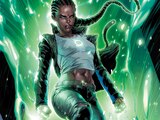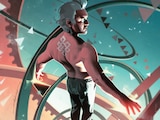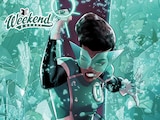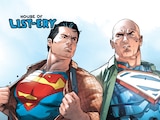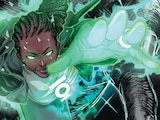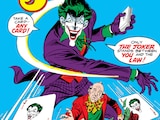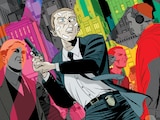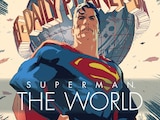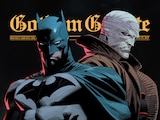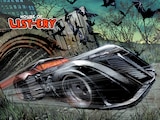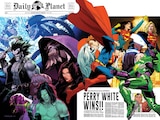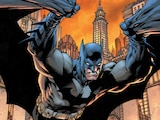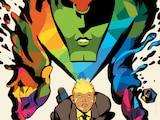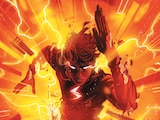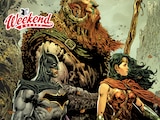
The most important creators in my comic book-reading experience have always been the ones whose work opened up to other things. While you can read and enjoy a comic for exactly what it is, and think nothing of it once the last page is turned, it’s something else when those books inspire continued thought and exploration.
Los Bros Hernandez have always been those kinds of creators for me. When I discovered Love & Rockets back in the 1980s, it changed a lot of what I thought about the kinds of stories comics could tell, but it also caused me to take a different view of the culture around me. On one hand, Jaime’s stories showed me more about my Southern California neighbors. Some of his characters reminded me of kids I knew at school, and some of them listened to the same music I did, but when we went home, things were completely different.
Then there was the other hand. Gilbert Hernandez’s Palomar stories went further. Though they chronicled a fictional community, the tales of Luba and her extended family took me across borders to see the source of so much of the Latino culture that was all around me. That included art and music and traditions that were entirely new to me. The first time I read the name Frida Kahlo, it was in the pages of Love & Rockets, when Gilbert focused his half of one issue on telling her biography. Julie Taymor’s cinematic portrait of the artist was not the first to use Kahlo’s art as a way of showing us who she really was. Gilbert adopted much of Kahlo’s imagery as a storytelling device. We were getting art and artist all in one package.
Of the Hernandez Bros, Gilbert has always been the most prolific, experimenting with style and genre and jumping from company to company to give each new project its ideal home. THE TWILIGHT CHILDREN is not his first book for Vertigo, but it’s been a few years since his last long-form graphic novel for us. THE TWILIGHT CHILDREN has the hallmarks of his best books: childish optimism tempered by adult secrets, and a sense of something magical that will affect them both.
What makes THE TWILIGHT CHILDREN different than the rest is it’s a rare collaboration between Gilbert and another artist. In this case, Darwyn Cooke, another master of the form.
Darwyn has made much of his reputation from trying on other people’s clothes and making them fit in ways the creators who preceded him could not have managed themselves. Be it his inventive updating of Will Eisner’s The Spirit or his translating Richard Stark’s Parker novels to the sequential page, or even his take on classic DC heroes in The New Frontier, casting the Justice League in the light of 1950s optimism in a way that eschewed simple nostalgia by gazing at the full expanse of our universe, Darwyn engages readers like no other. He, too, leaves us grappling with more as the layers of his work peel away.
So, how could these two be any less than a perfect match when put together? The beauty of THE TWILIGHT CHILDREN is that it’s what Gilbert Hernandez does best, then handed to Darwyn Cooke to do what he does best. Darwyn translates Gilbert’s perfect blend of down-to-earth humanity and spiritual wonder using the same precise, graceful storytelling that has made him one of the most popular comic book artists of our time.
Add to that the stupendous colors of Dave Stewart, and you’ve got one heck of an event. THE TWILIGHT CHILDREN is going to be one of the most intriguing and masterful comic books you’ll read this year, and one you’ll likely return to and ponder for years to come.
--Jamie S. Rich
Senior Editor, Vertigo Comics
THE TWILIGHT CHILDREN #1 by Gilbert Hernandez, Darwyn Cooke and Dave Stewart is now available in print and as a digital download. For a preview of the first issue, be sure to check out our Vertigo 2015 Preview comic, which you can read for free right here.

